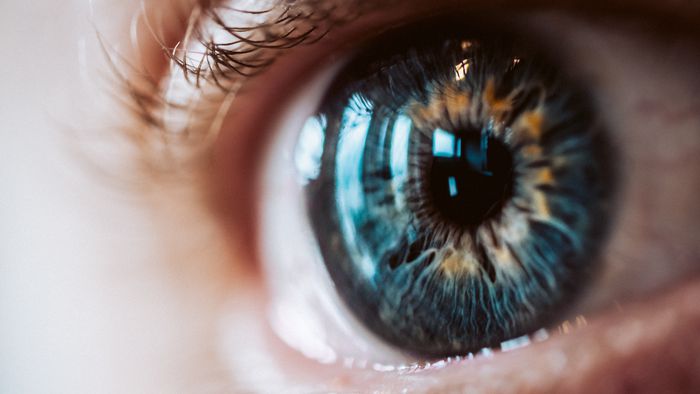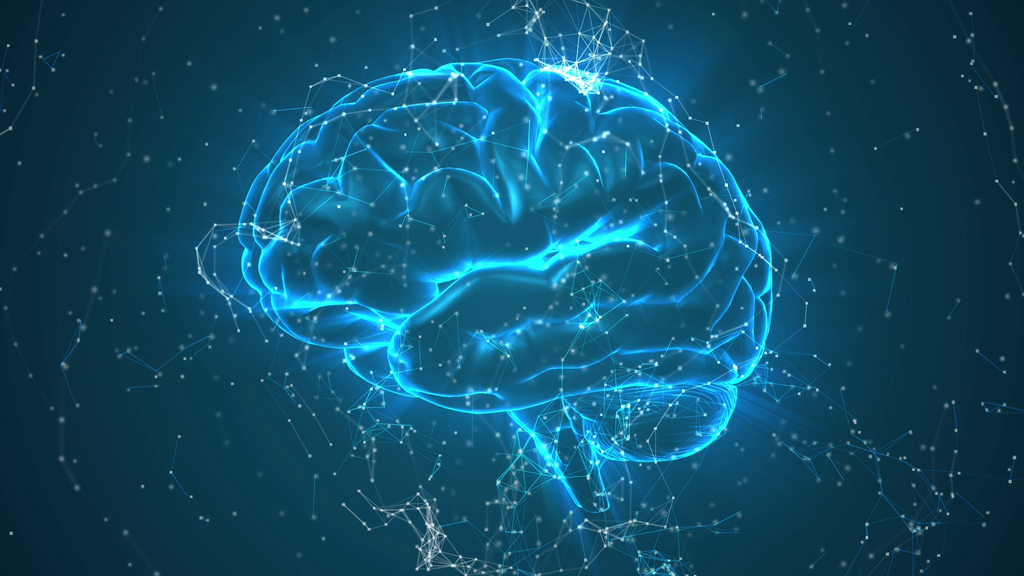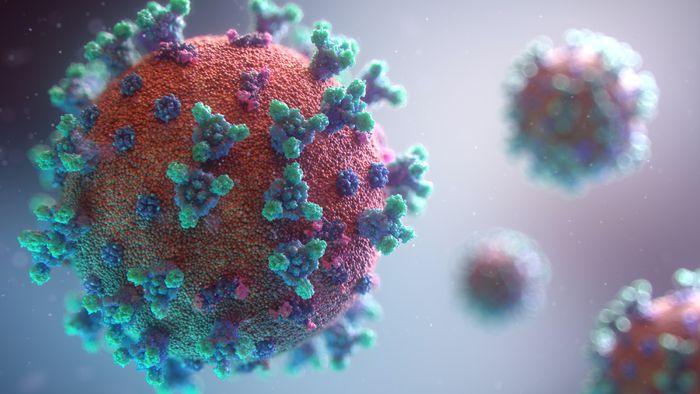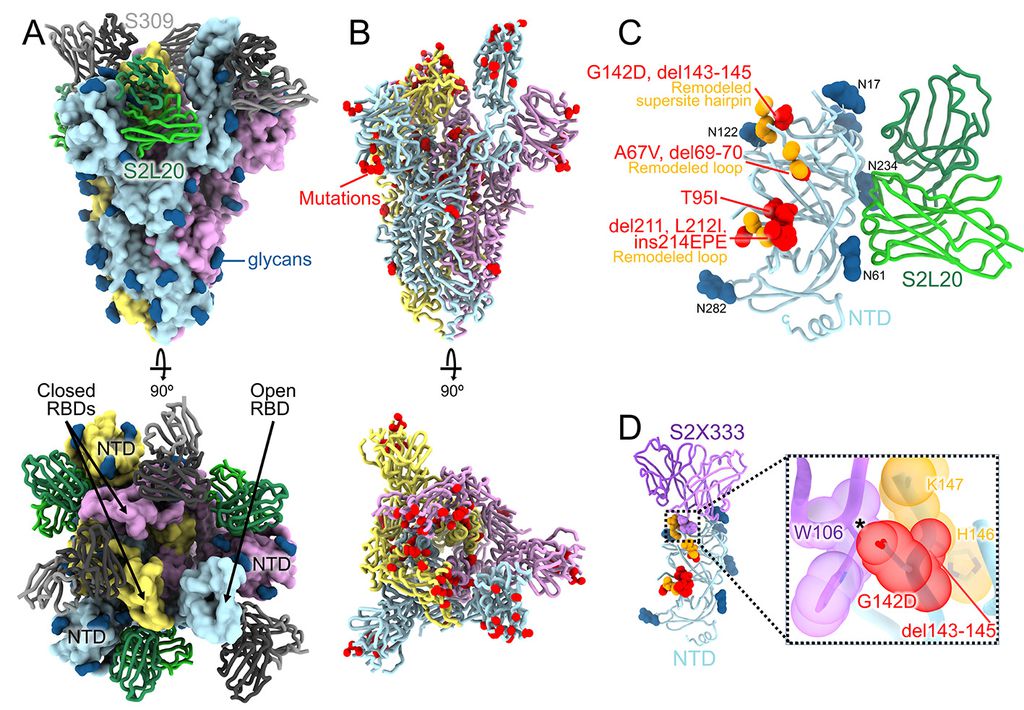Flávia Paixão, CORREIO columnist, is selected by the Black Voices Fund on YouTube
The global initiative selected 135 content creators; 35 are Brazilian
All you see is a "montage" of the last 15 seconds

Have you ever stopped to wonder how our brain manages to process all the information collected by our eyes? According to an American study, our vision is an average of what our eyes have captured in the last 15 seconds, with greater emphasis on the recent past.
- Your brain is devouring itself right now; understand the phagocytosis effect
- Study finds what causes brain fog in long covid
Without this strategy, it would be impossible to deal with all the visual information captured by the eyes, in which there can be thousands of shapes, colors and movements. Not to mention the light fluctuations, the different points of view and the moments when we blink. Perhaps, without this trick, the brain would only see a recording made while the cell phone falls from your hand, that is, numerous blurs and without any sharpness.

Published in the journal Science Advances , the study on the delay in the processing of brain images was developed by researchers at the University of California, in the United States. The authors' conclusion is that this is an illusory stability mechanism, in which the brain smooths the entry of new elements and ensures better sharpness.
–
Follow Canaltech on Twitter and be the first to know everything that happens in the world of technology.
–
After all, how the brain works
"Instead of analyzing each visual snapshot, we perceive at a given moment an average of what we've seen over the last 15 seconds. So, by putting objects together to look more similar to each other, our brain tricks us into perceiving a stable environment. Living 'in the past ' may explain why we don't notice subtle changes that occur over time," study authors Mauro Manassi and David Whitney said in an article on The Conversation website.
According to the researchers, if the brain were updated in real time, the world would appear to be a chaotic place, full of flickering light, shadow and movement. "We would feel like we were hallucinating all the time," they detail.
Instability and visual stability
To draw a parallel, imagine a camera with the lens always at maximum zoom while you try to frame an image to take a photo. Without the help of a tripod and an optical image stabilizer, it is practically impossible to capture the image without blurring. It's something close to what happens to our vision and the processing done by the brain. The video below helps to understand better:
Understand the 15 seconds
To prove the existence of the concept of illusory stability, the researchers produced a video, in English, capable of demonstrating how the brain works. Also, it is worth watching before proceeding in the text:
To understand: in the first part of the video, two faces of the same age appear, but the right one is soon covered by a red curtain. Then the face on the left side slowly ages for 30 seconds, but it is very difficult to notice these changes. At 36 seconds, when the other face appears at the initial age, it's much simpler to understand the change.
To test the illusion, the researchers recruited 136 volunteers. These people watched different 30-second videos where a person's face aged or rejuvenated. "When asked to say the age of the face at the end of the video, participants almost consistently reported the age of the face that was presented 15 seconds earlier," the authors say.
For scientists, the experiment helps to prove that the brain does not see in real time, but that we see more complex versions of what is happening around us, with an average of 15 seconds of delay. It is this phenomenon that guarantees, for example, the stability of perception.
It may seem strange that the brain clings to the past, but not so much, as it is a reliable source of recent information and is a good predictor of the present. "Basically, we recycle information from the past, because it's more efficient, faster and less labor intensive," the authors summarize.
According to the researchers, this more time-consuming construction than we see helps us to have a better experience while watching a movie or a series. In front of the screen, "we don't notice subtle changes that occur over time, such as the difference between actors and their stunt doubles", they complete.
Read the article on Canaltech.
Trending on Canaltech:
- Anvisa orders the collection of self-tests for covid-19
- Ministry of Health predicts peak of Ômicron in February: "We must prepare"
- With a rise in child hospitalizations, Nicolelis rejects face-to-face classes: "Absurd"
- This strange object "lights up" in the sky three times an hour
- Best Galaxy S line phones in history
“Perfect Storm” DLC adds calamities for Prison Architect
On sale for R$20.69, Perfect Storm is another step in the right direction in transforming Prison Architect into a more "healthy" game.
The post DLC “Perfect Storm” adds calamities to Prison Architect first appeared on Hu3br.
Two Point Campus will be released in May for PC and consoles
PC version of Two Point Campus is now on pre-order for R$199.95. For those who want to avoid the hefty price tag, it will also be on Gamepass.
The post Two Point Campus will be released in May for PC and consoles appeared first on Hu3br.
Purchases of iPhone and other items abroad will have zero IOF (but not now)
Ministry of Economy promises to zero IOF, tax paid on iPhone purchases and more products abroad, by 2029; measure was a response to an invitation from the OECD
Purchases of iPhone and other items abroad will have zero IOF (but not now)
Honda's cheapest motorcycle, Pop completes 15 years of Brazil
Launched in 2007 with the purpose of offering affordable mobility to Brazilians, the tiny Honda Pop completes, in 2022, 15 years of presence in our market. And throughout its trajectory, “Popzinha”, as it is known in some places, stands out for being the main means of transport for many families and motorcyclists … Continued
The post Cheapest Honda Motorcycle, Pop turns 15 in Brazil appeared first on Motociclismo Online.
Review – Serious Sam: Siberian Mayhem
Serious Sam: Siberian Mayhem shows the creativity of a team and interprets in a different way the strengths and weaknesses of the shooter.
The post Analysis – Serious Sam: Siberian Mayhem appeared first on Hu3br.
At banana prices Fruit prices skyrocket in Salvador and raises inflation
The region had the highest inflation forecast for the month of the last 14 years
Spike protein mutations help Omicron escape antibodies

To understand why the Omicron variant (B.1.1.529) of the SARS-CoV-2 coronavirus is more infectious and transmissible, an international team of scientists investigated the mutations present in the spike protein (S). It is through it that the covid-19 virus can invade healthy cells in the body.
- Why does Ômicron tend to cause milder frames of covid?
- WHO investigates Ômicron underlining after discharge of cases
Published in the journal Science , the study involved the participation of different research centers such as the Howard Hughes Medical Institute and the University of Washington. According to the authors, mutations in the spike protein allow the virus to escape antibodies developed against other coronavirus variants and also be able to invade healthy cells more quickly.

"The findings provide a blueprint that researchers can use to design new protective measures, such as vaccines or therapy, against Omicron and other coronavirus variants that may emerge," said University of Washington scientist David Veesler.
–
Feedly: subscribe to our RSS feed and don't miss any Canaltech content on your favorite news aggregator.
–
“This virus has incredible plasticity: it can change a lot and still maintain all the functions it needs to infect and replicate,” Veesler said of the mutations. "And it's almost guaranteed that Ômicron is not the last variant we'll see," he added.
Omicron mutations
It is worth remembering that the Ômicron variant was first identified in November 2021 in South Africa and, since then, the global numbers of cases of the new strain have not stopped growing. In addition to being highly infectious, the variant is able to "escape" more easily from antibodies produced against previous variants, which can lead to people already infected to reinfect themselves and reduce the protection of vaccines.
According to the researchers, one of the reasons for the high transmissibility is the large number of mutations in the amino acid sequences of the spike protein of the coronavirus. To be more precise, there are 37. These directly affect the area known as the Receiver Binding Domain (RBD).
RBD is the target of the ACE2 enzyme, present in human cells and the gateway to the coronavirus. The research concluded that these mutations were responsible for increasing the ability of RBD to bind ACE2 by up to 2.4 times.
In addition, the team observed that the mutations altered the way the spike protein interacts with antibodies. For example, the ability of almost all monoclonal antibodies against it is reduced.
Now, the aim of further research on the SARS-CoV-2 coronavirus will be to identify additional regions in the spike protein that are at lower risk of mutating and are more stable. This will allow vaccines, in the future, to trigger a strong and lasting immune response against numerous variants.
Read the article on Canaltech.
Trending on Canaltech:
- Possible failure of Amazon Brazil allows free purchases with cumulative coupons
- Ministry of Health predicts peak of Ômicron in February: "We must prepare"
- Moto G20 vs Moto G9 Power Comparison
- Xiaomi announces which phones will be updated to MIUI 13 soon; check out
- Volvo C40 | Electric coupé may have a cheaper version in Brazil
Ride better and safer with Honda's RedRider program
Honda is committed to offering its customers the best experience with their motorcycles, that's why we created the RedRider program. The Honda RedRider program was developed so that riders can enjoy their motorcycle much more safely, helping them to develop their riding skills. But RedRider goes further: the Honda program … Continued
The post Ride Better and Safer with Honda's RedRider Program appeared first on Motorcycling Online.